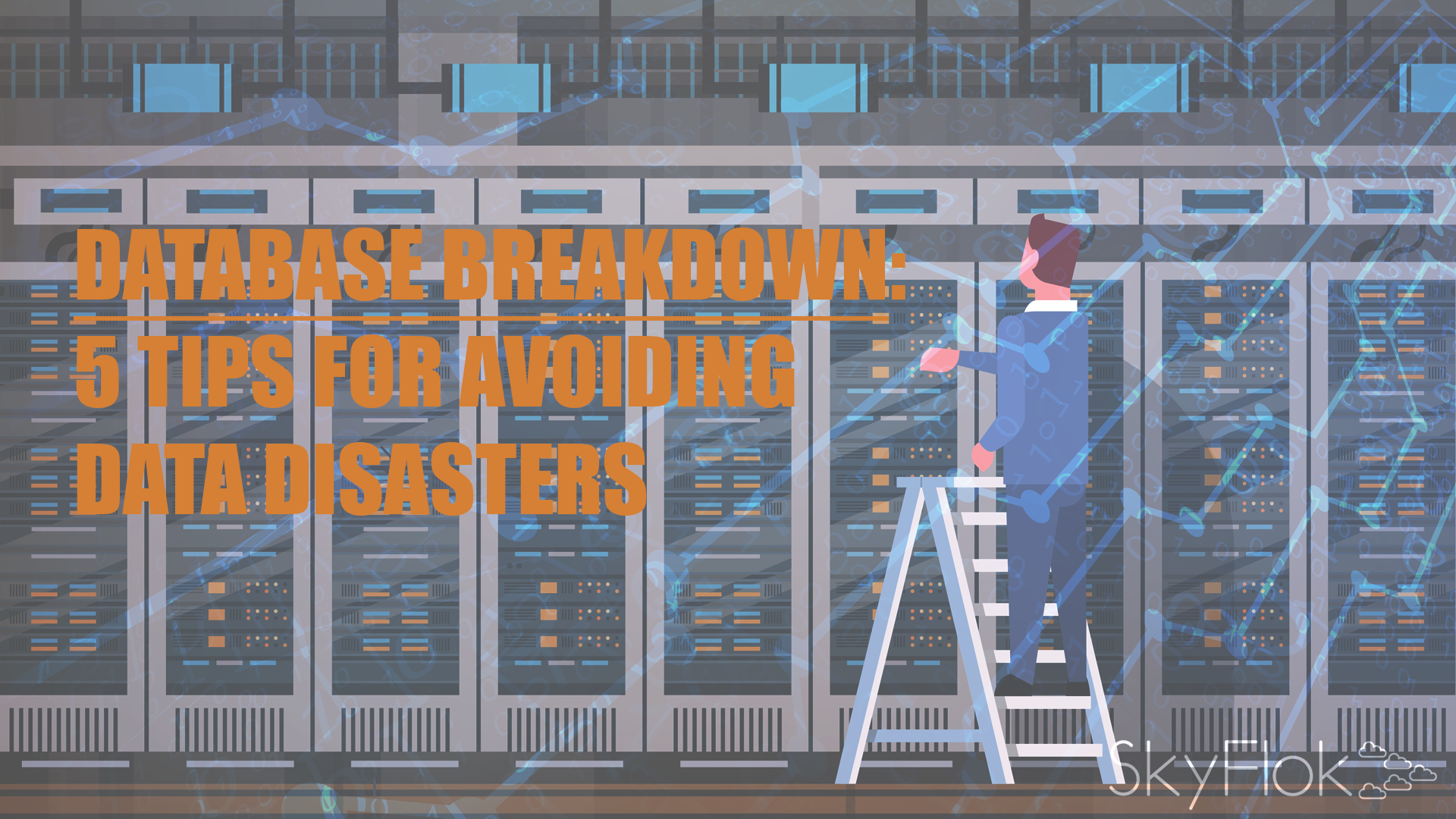Data loss is a serious problem for businesses of all sizes — losing files means losing time and money to restore or recover information that is essential to your business.
To mitigate the risk of losing important files and save time and money, consider a privacy-first solution like SkyFlok.
SkyFlok always backs up, keeping all versions of your files and providing you easy access to them. The backed up files are encrypted both during transit to the Cloud and during storage in the Cloud itself.
Keep your files safe and private and get an efficient data-recovery plan to get you running as quickly as possible with SkyFlok!
It’s every system administrator’s worse nightmare. An attempt to restore a database results in empty files, and there is no way to get the data back, ever.
Despite the fear and panic created by data loss, more often than not it’s due to simple things that are under our control and can be prevented. Studies have shown that the single largest cause for data outages is human error. Regardless of how much you try, there are still going to be mistakes and you have to account for them in the way database changes are managed.
Here are five simple tips for keeping things running smoothly and minimising risk.
Define roles and responsibilities
Safeguards need to be put in place to ensure that only authorized people to have access to the production database. The level of access shouldn’t be determined only by an employee’s position but also by the level of seniority. A famous story made the rounds last year when a developer shared that while following instructions in a new employee manual, he accidentally deleted the production database. To make things worse, the backup was 6 hours old and took all too long to locate. You might be shaking your head in disapproval right now over how the company could have been so irresponsible to let this happen, but it turns out…it’s really not uncommon (check out the comments on this tweet). To prevent unauthorised changes in the database that can result in utter disaster, it is essential to define, assign, and enforce distinct roles for all employees. If you need to, set roles and permissions per project to avoid any accidental spillover.
Confirm back up procedures
You need a well-planned backup strategy to protect databases against data loss caused by different types of hardware, software, and human errors. You’d be surprised by how often backups simply aren’t happening. In one case a sys admin complained that bringing hard drives home with backed up data was inconvenient, so the company invested in an expensive remote system; the same sys admin never got around to creating the new procedure, so the latest version of the backed-up data was 3 months old. Another employee discovered at his new job there hadn’t been a single back-up for the past three years. Knowing the back-ups are happening isn’t enough. You also need to also check to make sure they are usable and include all the data that’s needed. It’s worth restoring and then checking that the restored database is an exact match to the production data. A Nagios check such as “Is the most recent backup size within x bytes of the previous one” is a simple solution to make sure the restored database matches the production database.
Adopt version control best practices
Version control practices have long since been adopted in other code development environments, ensuring the integrity of code as only one person can work on a segment at any given time. Version control provides the ability to identify which changes have been made, when, and by whom. It protects the integrity of the database by labelling each piece of code, so a history of changes can be kept and developers can revert to a previous version. Bringing these practices into the database is crucial for data loss prevention, especially in today’s high-paced environment with increasingly shorter product release cycles. By tracking database changes across all development groups you are facilitating seamless collaboration while enabling DevOps teams to build and ship better products faster.
Implement change policies
Databases are code repositories, so they need the same safeguards when changes are made. It’s crucial to have clear policies on which changes are allowed and how they are administered and tracked. Is the action of dropping an index in a database allowed? How about a table? Do you prohibit production database deployments during daytime hours? All of these policies should not only be practised by participating teams, but enforced on the database level, too. Keep track of all the changes and attempted changes made. A detailed audit can help detect problems and potential security issues.
Automate releases
By taking advantage of comprehensive automated tools, DBAs and developers can move versions effortlessly from one environment to the next. Database development solutions allow DBAs to implement consistent, repeatable processes while becoming more agile to keep pace with fast-changing business environments. Automation also enables DBAs to focus instead on the broader activities that require human input and can deliver value to the business, such as database design, capacity planning, performance monitoring and problem resolution.
Databases often hold the backbone of an organisation, a priceless container for the transactions, customers, employee info and financial data of both the company and its customers. All this information needs to be protected by following clear procedures for managing database changes. Reducing the likelihood of data loss due to human error can help everyone sleep better at night.
Click here to view original web page at www.softwaretestingnews.co.uk







